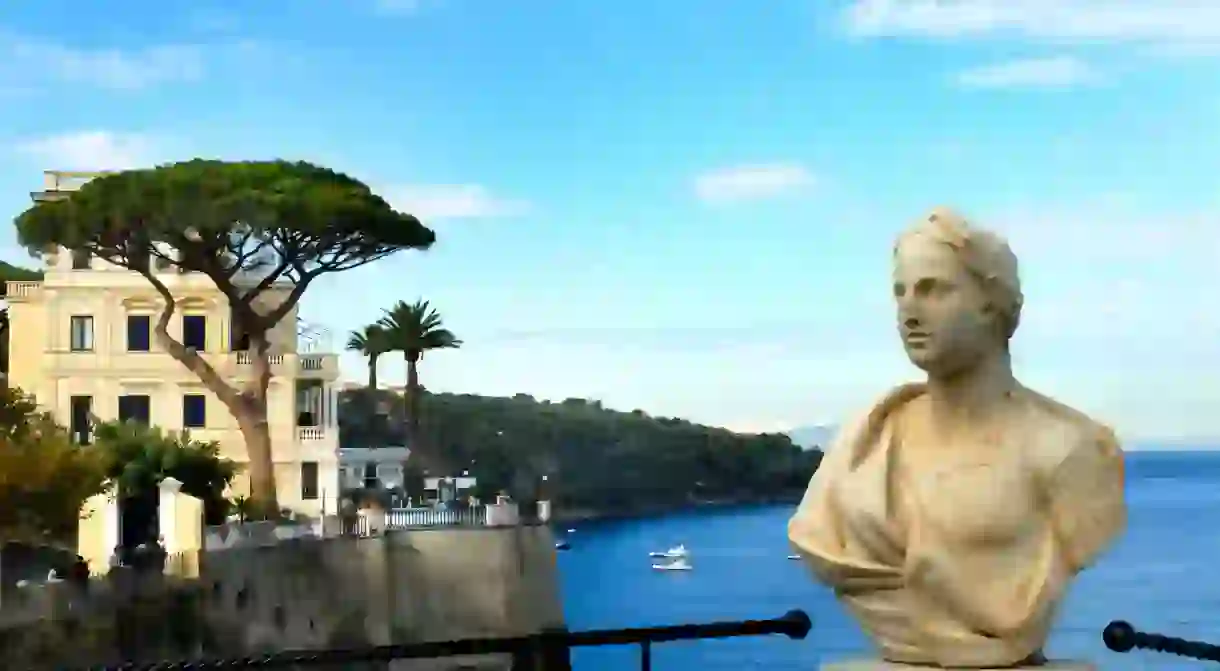Reasons Why You Should Visit Sorrento, Italy

Though famous for lemons and fabulous hotels, Sorrento is sometimes overlooked in favour of the tourist big hitters of Amalfi and nearby Naples. But this historic coastal town is worth a visit on its own merit.
Visitors to southern Italy often tick off the Amalfi Coast, Sorrento and Capri in one visit, almost merging them into a single location – but that is a disservice to how unique these places are. Sorrento – on the Sorrentine Peninsula – is a dazzling destination that deserves to shine in its own light, having been popular with tourists since the 19th century. Its romantic appeal lives on in the restaurant-lined Piazza Tasso and the Church of San Francesco, while the Museo Correale and the Museo Muta give an insight into the ancient culture and traditions of this fabulous location. Here are the top reasons to visit Sorrento.
It's within easy access of Rome, Florence and Naples
Architectural Landmark, Historical Landmark

If you’re travelling from major cities such as Rome and Florence, Sorrento is better connected and easier to reach than the Amalfi Coast – making it a perfect base from which to explore this popular southern Italian region. Furthermore, instead of multiple journeys involving trains and buses or private transfers, catch the high-speed train from Sorrento straight to Naples. Sorrento is also well connected by sea, and in the summer months there are daily departures from the port to Naples, Capri, Ischia and Amalfi, and to Procida three days a week.
It has incredible views of the Bay of Naples
Park

The high cliffs of Sorrento make for some dramatic views over the Bay of Naples, towards the Amalfi Coast and across to Capri. The most popular sunset spot is the Villa Comunale Park – a large public park with benches and a small cafe. Splurge on a drink on the terrace or roof deck at one of the five-star hotels if you’re feeling fancy, or head to seaside restaurant La Marinella in nearby Sant’Agnello, which has a spectacular view of the bay.
To explore the Museo Correale
Museum
This gem of a museum is on the seaside edge of town in what was once a private home of the aristocratic Correale family. Meander through the 24 rooms scattered over four floors and filled with old family treasures including ceramics, furniture, paintings and an impressive collection of clocks. There is a lovely garden dotted with ancient trees and plenty of benches when you want to sit down.
The Museo Muta is a centre for impressive woodcraft
Museum
The art of marquetry (applying decorative veneer to an object) has a long history in Sorrento, dating back to the aristocratic age of the Kingdom of the Two Sicilies, when local artisans created detailed inlaid items for the royal palaces. Known as intarsio in Italian, there are examples all over town. For some background knowledge, visit the Museo Muta in the historic centre. The collection covers both antique and modern examples and is housed in an 18th-century palazzo. There are also weekend and week-long courses if you would like to learn this craft for yourself.
You can people-watch in Piazza Tasso
Architectural Landmark

Piazza Tasso is the main square in Sorrento. Named after the 17th-century poet Torquato Tasso, the square is a busy meeting point bounded by cafes, the baroque Church del Carmine and the Palazzo Correale. The main shopping district also starts from here.
To wander around the romantic Church of San Francesco
Church

These beautiful cloisters are a popular wedding venue, so you are likely to spot newlyweds on a summer visit here. Built in the 14th-century as a monastery, it has baroque arches and plenty of greenery that create a romantic atmosphere which the public can now enjoy. Look out for temporary exhibits on the second floor.
You can find excellent souvenirs along the Corso Italia
Building, Market

Sorrento is a terrific shopping destination. The main shopping streets are the Corso Italia and Via San Cesareo. You will find boutiques selling made-to-measure sandals, intricate woodwork and hand-painted ceramics – plus an entire range of items made from the region’s lemons.
You can bathe in the Baths of Regina Giovanna
Architectural Landmark

The remains of a once-lavish Roman villa built next to the sea are now the Baths of Regina Giovanna – a popular swimming spot with clear aquamarine waters and rocky patches where you can leave your towel. Either walk from town, which takes about 40 minutes, or take a short bus ride there. From the road, there is a cobblestone path and a long set of steps down to the water. Take the narrow wooden bridge and find the small nearby cafe for a drink or a light meal after your swim.
The best trekking is underwater at the Vervece island
Natural Feature

Explore what lies beneath the deep, clear water at the Vervece island dive site. There’s a submerged statue of the Madonna to protect divers; it’s decorated with flowers on Assumption Day on 15 August. The area is rich with colourful corals, fish and red starfish.
It'll get you into birdwatching
Natural Feature
Spend a day hiking in one of the numerous nature areas that dot the Sorrentine Peninsula and your binoculars will be calling out to you. Italy serves as a bridge for trans-Saharan bird migrations, and the best time to spot these visitors – mostly a range of warblers – is from April to July. Native to the area are kestrels and peregrine falcons.
After you’ve ticked these activities off your itinerary, you must head to Naples. You can stay in one of these hotels – now bookable via Culture Trip – or discover the coolest neighbourhoods in the city. See how you can spend your days here, and then finish off in one of these bars.













